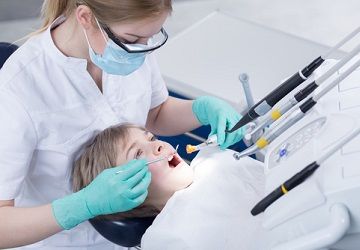New Study Shows Dental Benefits Influence Children's Dental Needs
A new study published in the Journal of the American Dental Association highlights how access to dental insurance affects the likelihood of a child receiving dental care. Researchers looked at frequency of dental care visits to determine if a child's oral-health needs were being met. Children with unmet dental needs were defined as those who did not receive needed dental care within the past year due to financial reasons.

In time for National Children’s Dental Health Month, the Journal of the American Dental Association (JADA) has released a report showing how dental benefits play a significant role in meeting the dental care needs of children across the country, including regular check-ups and treatments.
In the new report, JADA emphasized children who were enrolled in private or public dental care plans were much more likely to receive needed dental care compared to children without such insurance coverage.
The authors of the study used National Health Interview Surveys from 1997 through 2014 to collect data, examining records from more than 65,000 patients. Data was collected on a variety of factors, including dental visits, unmet dental needs, and type of insurance held by children aged two to 17, including private, Medicaid or public, or other and uninsured. Children with unmet dental needs were defined as those who did not receive needed dental care within the past year due to financial reasons.
JADA also showed that the number of children who were uninsured fell by 58 percent during the study period, and that there was a substantial shift in insurance coverage from private to public. The study authors said in the report that “The shift toward use of public insurance along with a significant association between unmet needs and dental visits support the effectiveness of publicly funded programs in facilitating the use of dental services in the United States."
In defining how dental needs are met, the authors of the report looked at the regularity of dental visits and patients having access to dental care. They identified several barriers to receiving dental care, including socioeconomic status, beliefs about dental care, and the accessibility of dental providers.
Factors that enabled children to receive adequate care included level of education, household income, and dental insurance coverage.
"If an imbalance exists between barriers and enabling factors, a patient may have a higher chance of having unmet dental needs because of cost, which leads to delayed diagnosis of issues, more complex treatment, and ultimately increased burden on public health systems," the authors concluded.